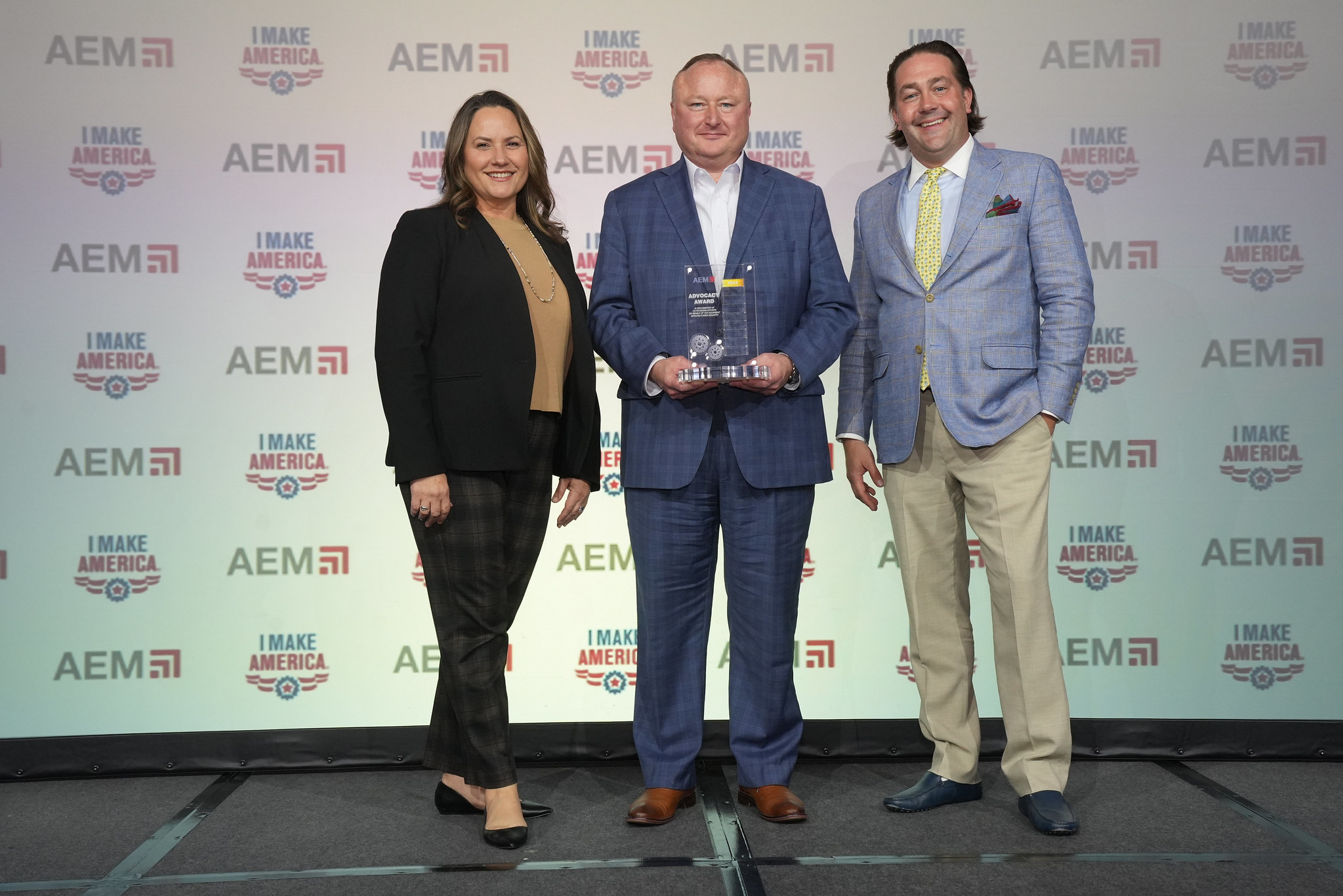By Johnathan Josephs, MSL, AEM Regulatory Affairs Manager —
Don't anticipate a regulatory holiday slow-down this year. Your regulatory environment has just started to change, ushered in by a new docket of emissions regulations in almost every major jurisdiction AEM member companies trade into today. From a compliance perspective, the risk is high. From a planning perspective, we are a year out from emissions reduction requirements. The following regulatory and standard changes have all taken affect in the last two months:
The International Sustainability Standards Board (ISSB) issued two new standards IFRS S1 and IFRS S2, which will change the landscape of sustainability-related disclosures in capital markets worldwide. The ISSB will also continue to work with jurisdictions wishing to require incremental disclosures beyond the global baseline and with Global Reporting Institute (GRI) to support efficient and effective reporting when the ISSB Standards are applied in combination with other reporting standards.
AEM is working on the guidance from World Resources Institute (WRI) and the World Business Council for Sustainable Development (WBCSD). The GHG Protocol works with governments, industry associations, NGOs, businesses and other organizations. An AEM goal for 2024 is to have these organizations officially recognize heavy-duty off-road machinery as part of the GHG Protocol, in line with existing technical standards.
On Oct. 7, 2023, Governor Gavin Newsom of California signed into law two climate disclosure bills passed by the California Legislature (California SB 253 & SB 261). These laws now require that "by January 1, 2025 businesses with total annual revenues over $1 billion and operating in California shall disclose their greenhouse gas emissions" and that "businesses with total annual revenues over $500 million and operating in California, beginning Jan. 1, 2026, shall develop a report on climate-related financial risks." Notably, the law concerning disclosure of greenhouse gas emissions requires disclosure of Scope 1, Scope 2, and Scope 3 emissions. U.S. Securities and Exchange Commission (SEC) Chair Gary Gensler's testimony during a House oversight hearing highlighted the potential for the California law to support the agency's efforts to regulate corporate climate disclosures, which face stiff opposition from industrial lobbies. For many, this will drastically change the way we account for climate risk. The U.S. Securities and Exchange Commission is also set to finalize a rule on climate reporting next month.
European Commissions directive revisions
Back in August the European Commissions dropped new rules, which will inform rulemaking for EU counties. The rules will inform how to calculate the contribution of biofuels and biogas in blended transport fuel to the EU renewable energy target. The rules require EU countries to ensure that the share of renewable energy in the final consumption of energy in transport is at least 14% by 2030, including a minimum share of 3.5% of advanced biofuels. The revisions are subject to public comment.
Taskforce for Nature Related Climate Disclosures
At #ClimateWeekNYC, the Taskforce on Nature-related Financial Disclosures (TNFD) will be launching the final TNFD Recommendations for nature-related risk management and disclosure. These recommendations will help corporates, financial markets and providers of capital understand, price and act on the nature-related risks and opportunities sitting at the heart of most businesses.
The goal of the Off-Road Zero-Emission Targeted Manufacturer Rule is to achieve criteria pollutant and GHG emissions reductions by accelerating the development, production, and sale of zero-emission off-road equipment and powertrains.
We can agree that having a simple list of these rules does not move the dial on understanding what to do about them. Rather we need an understanding of how to measure inherent risk and build out internal controls, so our business areas are ready for whatever new rules are proposed. In other words, think of internal controls as a catch-all for mitigating regulatory and legislative risk.
As your friendly neighborhood compliance officer, I have a few recommendations. After all, with great power comes great responsibility: Lean on your risk, legal, and compliance departments. Give them the resources they need to better implement internal controls. And complete comprehensive ESG risk assessments quarterly (at least). The regulations, recent legislation, and standards may be dense; however, they all rhyme. For example, IFRS S1 &S2 is said to be an expanded continuation of TCFD risk assessments. Moreover, it was highlighted in the new TNRD recommendations that ISSB pulled from TNRD to draft IFRS S1 & S2.-
On the regulatory front, the Securities and Exchange Commission is poised to go to final rule on Scope 1, 2, & 3 climate disclosures, phased in over a 4-year period. However, California is front running the federal government on climate disclosures and has also proposed emission reduction mandates set to front run what the US EPA may implement.
Breath. This has all happened before. After the financial crisis of 2008, regulators and legislator globally proposed bills like the Dodd-Frank Wall Street Reform and Consumer Protection Law and the Consumer Financial Protection Bureau (CFPB), which today seem commonplace. Financial markets survived the changes with few casualties. As the heavy-duty off-road industry undergoes its own Dodd-Frank moment, we can take lessons from 2008, to better prepare for this ESG revolution.
- "Tone at the top." In the context of an ethics and compliance program, the tone at the top sets an organization’s guiding values and ethical climate. Properly fed and nurtured, it is the foundation upon which the culture of an enterprise is built. Your culture can either be one of greenwashing or one of ESG leadership. In either case it starts with what your C-suite, Board of Directors, and executives are saying/ doing within your company.
- "Three lines of defense." Compliance lines of defense are related to the areas of the organization responsible for different aspects of risk management. The three lines of defense model is first, the business area (both managers and staff); second, is enterprise compliance; and third, external audit. In the case of ESG disclosure, regulators in the EU, UK, and US are calling for assurances, which is referring to that third line of defense. However, by the time our data and processes reach that point, we should have properly vetted everything through the first two lines of defense.
- Link your sustainability policies and procedures with train relevant to business area and level of employment. Everyone at your company should know how emissions policies connects to the specific work they do. If they do not, then teach them. This means that one size does not fit all, and trainings should be tailored to relevant business areas and job functions.
Regulations are sometimes tough to understand, but following this snippet of corporate compliance will set your company up for success. We'll get through this together. Just keep swimming. With the off-road perspective incorporated, the world will be better for it.
For more perspectives from AEM staff, subscribe to the AEM Industry Advisor.





